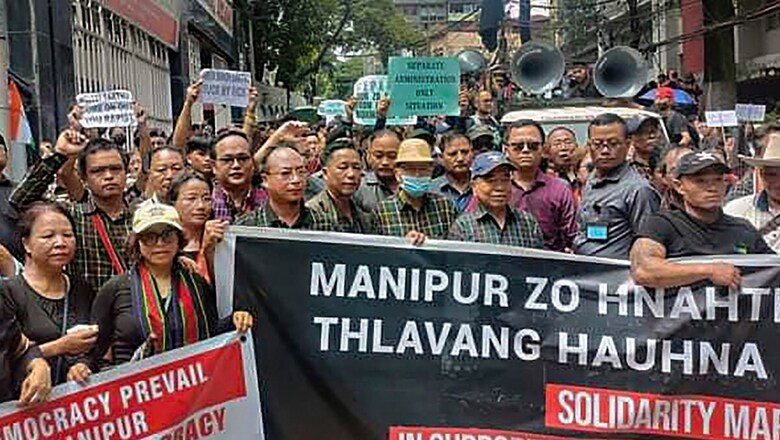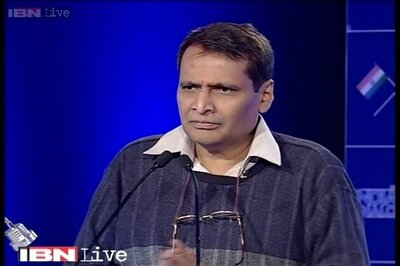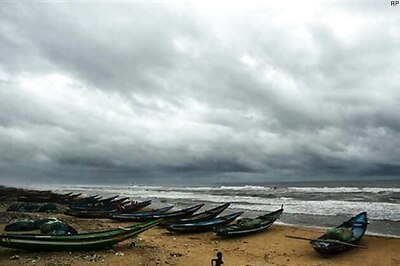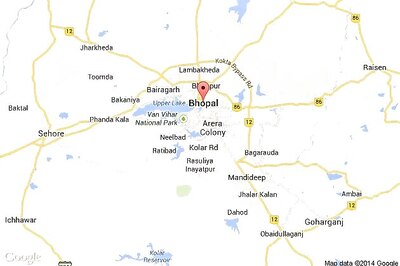
views
The elections of five states — Madhya Pradesh, Rajasthan, Chhattisgarh, Telangana and Mizoram — are round the corner. Of these, unfortunately, the Northeast state of Mizoram, which has only one Lok Sabha seat, has been receiving the least attention. The state has 40 assembly constituencies. It will go to the polls on November 7.
Regional parties have always been a strong force in this Northeast state, where the first assembly elections of 1972 were won by the Mizo Union and the second and third assembly elections of 1978 and 1979 respectively by the Mizoram People’s Conference. In this state, since 1989, the incumbent government has been changing after two successive terms with the power oscillating between the Congress, which ruled for 23 years non-continuous, and the Mizo National Front, the current ruling party of the state, although there have been other significant players too who contested elections either in alliance with the Congress or the MNF or separately.
A three-cornered fight
This time too, the state elections are going to be a three-cornered fight among the MNF, Zoram People’s Movement, and the Congress. The three parties are contesting all the 40 seats. The Bharatiya Janata Party, contesting 23 seats, is also in the fray as a fourth player with a focus on parts of South and North regions of the state, where ethnic minorities — Chakmas, Maras and Brus — have an influence.
This time, the elections are different from the past ones as the fight is mainly between the MNF and ZPM with the Congress relegated to third place. The binary politics between the MNF and the Congress was broken by the Lalduhoma-led ZPM in the last elections, where it surprised everyone by emerging as the main Opposition party by winning 8 seats.
The Importance of Lunglei Municipal Results
Lalduhoma is a senior politician with stints in many political parties including the Congress, MPC, MNF, MNF (Nationalist) and Zoram Nationalist Party. Lalduhoma’s hopes of becoming chief minister were bolstered after his party, ZPM, registered a stunning performance this year in the Lunglei Municipal Council polls held in April. It swept all the 11 seats with a vote percentage of 49.31 per cent while the ruling MNF, which secured 29.4 per cent votes, failed to even open its account.
The Lunglei Municipal Council falls under the Lunglei district, which is in the South region. In the last elections, of the eight seats won by ZPM, six were from the Aizawl region while two were from the North region. It failed to win a seat from the South region, which has 12 seats. The victory of ZPM in the LMC elections showed the expansion of the party in the South and also the rising anti-incumbency against the Chief Minister Zoramthanga-led MNF government. Significantly, four assembly seats coming under the LMC area — Lunglei East, Lunglei West, Lunglei North and Lunglei South — were won by the MNF in the last elections. That’s the reason ZPM sweeping the LMC elections became a talking point in the state political circles.
MNF banks on Zo refugee issue to battle anti-incumbency
However, the state’s politics has changed since then as a result of ethnic clashes that broke out between Meiteis and Kuki-Zomis in the neighbouring state of Manipur in May. More than 12,000 Kuki-Zomi people from Manipur have taken shelter as refugees in Mizoram, which already shelters over 40,000 Chin-Kuki refugees from Myanmar and Bangladesh. It has to be mentioned that Chin-Kuki-Zomi people of Myanmar, Bangladesh and Manipur share an ethnic bond with Mizos of Mizoram and all these tribes are collectively termed as Zo.
This refugee issue has become an important point in the state’s politics allowing the ruling MNF, battling anti-incumbency, to rake up the cause of Mizo nationalism by bringing into the limelight the old issue of Greater Mizoram, which seeks to unite all areas inhabited by the Zo tribes. The state government, recently, even refused to collect the biometric data of refugees from Myanmar going against the wishes of the Centre. This is to send a message to the people of the state that the interests of Mizos and the Zo family remain a top priority of the party, despite being a constituent of the BJP-led National Democratic Alliance.
With rising unemployment and the condition of roads and other infrastructure remaining poor in the state, MNF’s strategy to shift the election towards the cause of Mizo nationalism by utilising Manipur issue — where the Opposition parties like ZPM, Congress and even BJP have expressed solidarity with the Kuki-Zomis — will be beneficial for the ruling party to what extent remains a critical question.
It, however, is also banking on its Socio-Economic Development Policy, providing direct monetary assistance to 60,000 families to battle anti-incumbency. The party has also allied with the Hmar People’s Convention (Reformation) with an eye on the three Hmar-dominated seats — Tuivawl, Serlui and Chalfilh — to counter ZPM, which has allied with the Hmar People’s Convention led by President Rohringa.
Rural areas weak link for ZPM?
On the other hand, the ZPM’s election campaign is based on addressing various developmental challenges and also addressing the upliftment of farmers with a focus on the rural votes as the party is relatively weak in rural areas. Last time, of the eight seats it won, only the Tuirial constituency was the rural seat.
It has to be mentioned that there are 19 rural constituencies in the state. For a party to come to power, it has to win as many seats as possible. In the 2013 elections, MNF won only one rural constituency — the Tuikum seat. But in the last elections, it won 12 rural seats, of these, 11 were won by the Congress in the 2013 elections. This shows that MNF’s outstanding performance in the rural areas was also a major factor behind its return to power after ten years in the last elections.
Making things difficult for the ZPM in the rural areas is the Congress, which remains an important player. It has to be mentioned that the five constituencies won by the Congress last time were all rural seats.
Congress’ votes to be the kingmaker
It’s an open secret that any division of anti-MNF votes between ZPM and Congress is likely to only help the MNF. After the two-day visit of Rahul Gandhi, the Congress, which is relegated to third place, has got oxygen in the Northeast state. This time, the party is contesting the elections by allying with ZNP and the People’s Conference Party, although both these parties currently are less influential in the state.
The MNF has a vote bank of around 30 per cent in the state. The handling of the Zo refugees by the MNF government has boosted its chances among voters. As ZPM, which got around 22 per cent votes in the last election, is an emerging party, the votes of Congress, which despite getting five seats last time secured 29.98 per cent votes, are likely to play a crucial role in deciding the next government. After all, for the ZPM to win the elections, it has to cut into the Congress’ votes as much as possible.
Sagarneel Sinha is a political commentator and tweets @SagarneelSinha. Views expressed in the above piece are personal and solely that of the author. They do not necessarily reflect News18’s views.




















Comments
0 comment